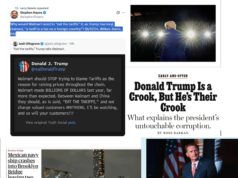( – promoted by lowkell)
 As I argued in the previous entry, responsibility for the unusually harsh nature of American politics today can be blamed almost entirely on today’s Republican Party, which makes a fight over everything. Is it valid to say that the Civil War was the result of the same spirit driving the South?
As I argued in the previous entry, responsibility for the unusually harsh nature of American politics today can be blamed almost entirely on today’s Republican Party, which makes a fight over everything. Is it valid to say that the Civil War was the result of the same spirit driving the South?
Was one side more responsible than the other for driving the process, from say 1848 to 1861, when the United States polarized, broke apart, and plunged into a bloody Civil War?
Let me acknowledge the great complexity of the history on which any such judgment must rest. Even a correct judgment would best be presented at book length. All I will do here is say briefly how it looks to me after considerable study of the era.
The process by which the United States came to Civil War might usefully be divided into two periods. The first would be the conflict — mostly, but not only, political — over slavery from, say, 1848 through 1860. The second would start with the decision by the Southern states to secede from the Union and to up the ante by firing on Fort Sumter.
Some landmark developments from 1848 through 1860 were: the political battle over admitting Texas as a slave state; the Compromise of 1850; the Kansas-Nebraska Act of 1854; the political struggles and violence over Kansas’s admission to the Union; the caning of Senator Sumner; the Supreme Court decision in 1857 in the Dred Scot case; the 1858 Lincoln-Douglas debates in Illinois; and, in 1859, John Brown’s raid on Harper’s Ferry.
This period reveals an intensifying insistence on the part of the South that it must prevail.
Ever since the Founders first penned, “We the People, the South had dominated the nation politically. But the trends of power had begun to run against the South. But rather than accept the tides of history, or just play defense, the South went on the offensive to extend the realm of slavery and the power of slaveholders. To do this, they had to overturn the old compromises. This in turn inflamed the North.
(In postings to come, I will document this Southern aggressiveness, this Southern insistence, this Southern overreaching, this Southern combativeness.)
The Southern elite — in the grip, as I see it, of a destructive spirit — were the main drivers of polarization, making the slavery issue so polarizing and poisonous that compromise became further and further out of reach, and the fracturing of national unity less and less amenable to repair.
The North, as I see it, was basically re-active.
The polarizing figures in the North — the abolitionists — were marginal in their home region and the target of considerable hostility from other Northerners. By contrast, the polarizing figures on the Southern side- the “fire-eaters”– were respectable and powerful parts of the Southern establishment.
They became increasingly dominant as the 1850s wore on.
The North, too, saw an increase in the passions of regional antagonism. But this was largely in reaction to the over-reaching of the South, and even by the eve of the outbreak of war, I would argue, the passions suitable for the conflict remained more fiercely inflamed in the South.
The South’s decision to secede will be the subject of the next entry.



 Sign up for the Blue Virginia weekly newsletter
Sign up for the Blue Virginia weekly newsletter







